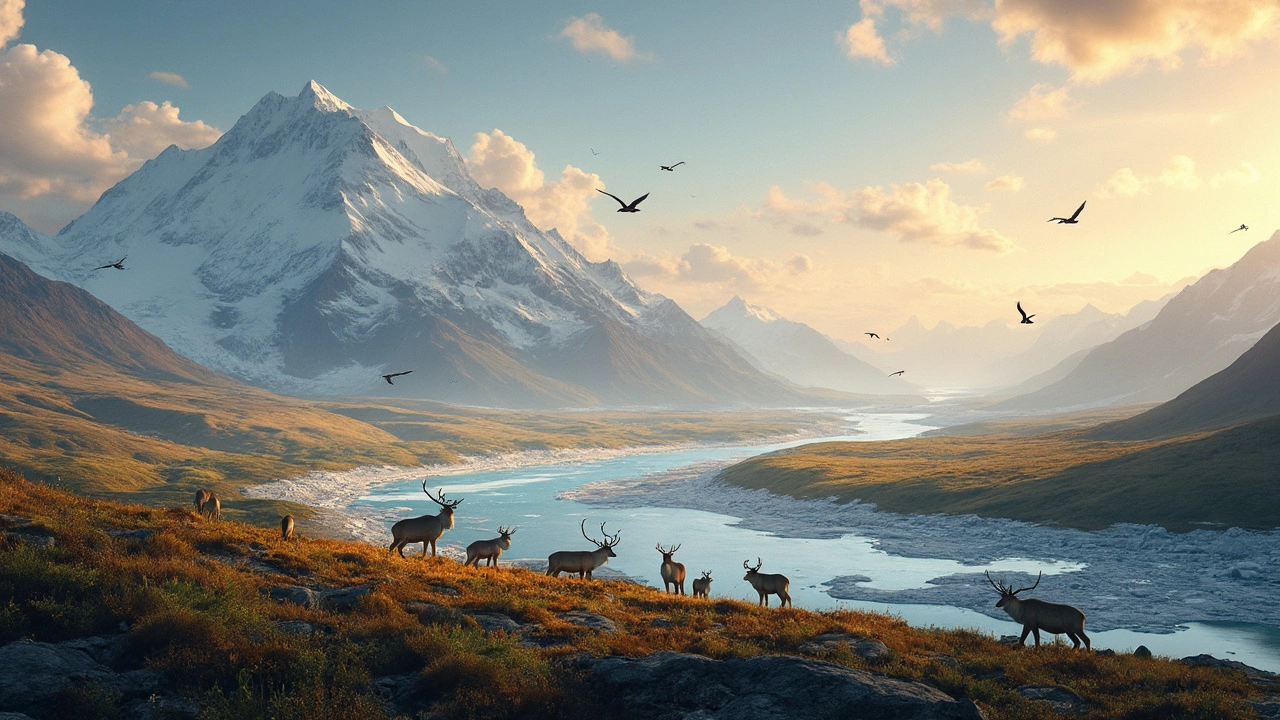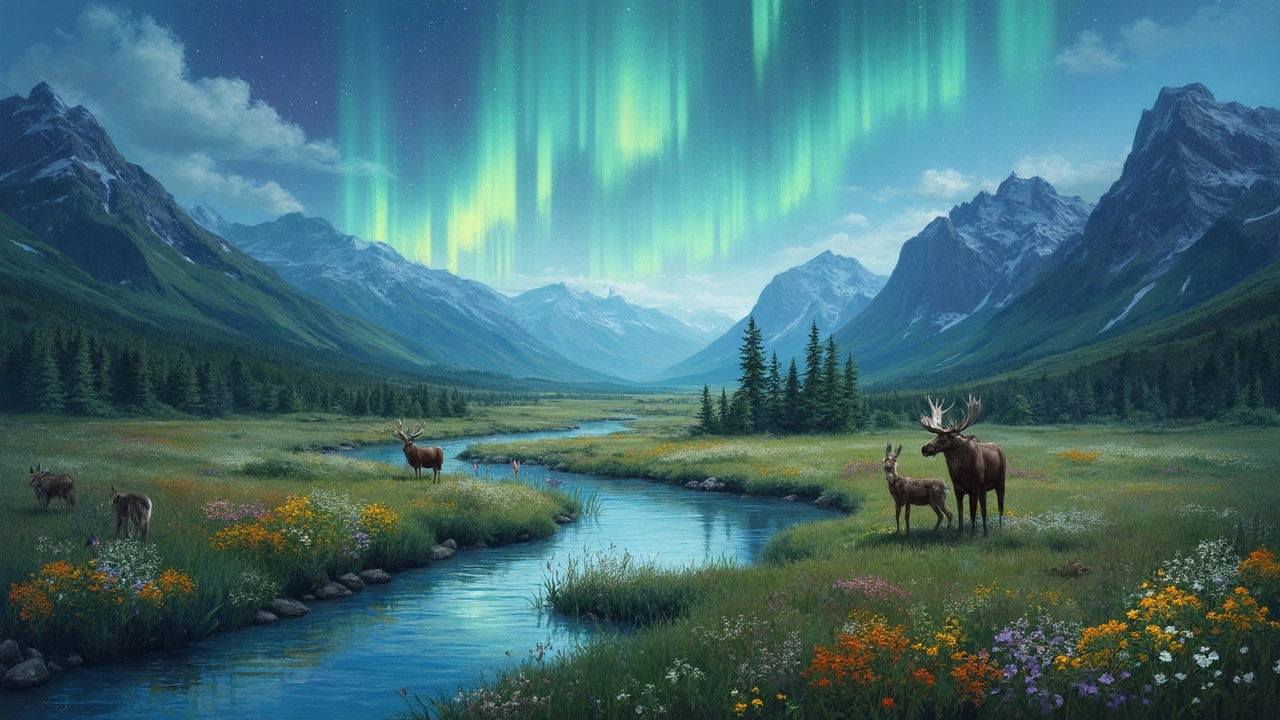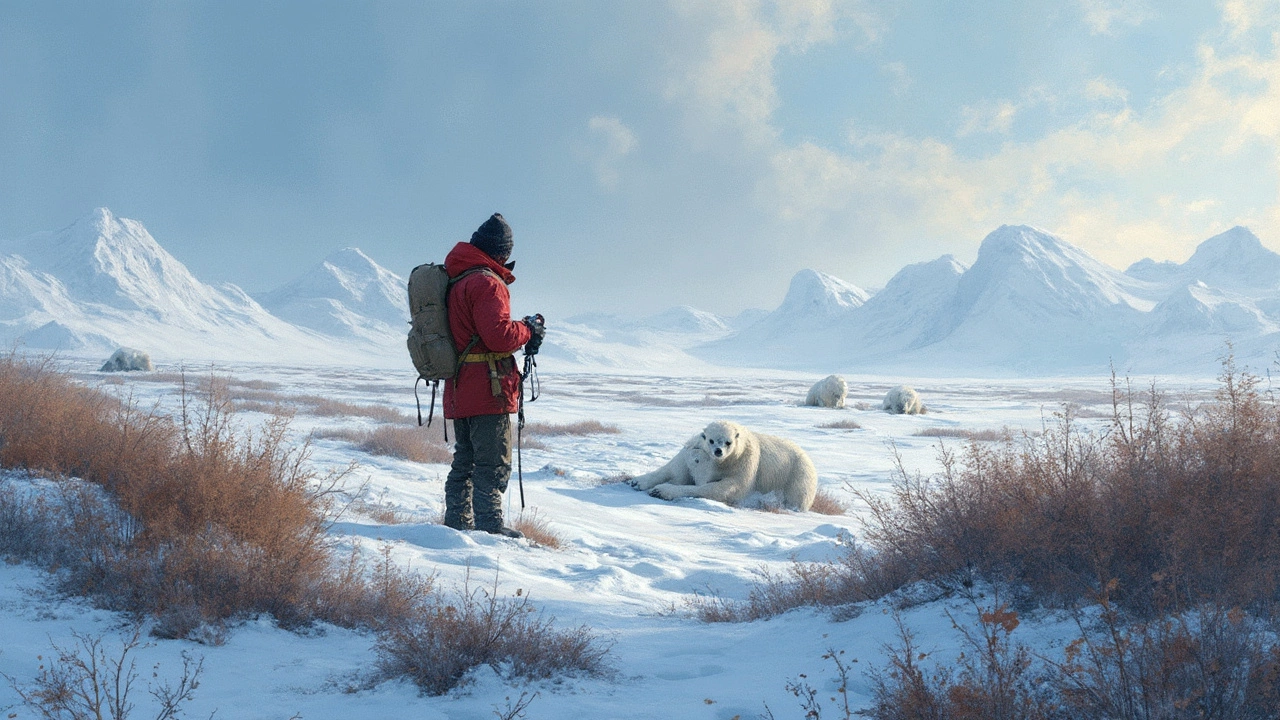Exploring the Largest Wildlife Refuge in the U.S.

- Apr, 13 2025
- 0 Comments
- Aaron Blackwood
When you think of vast, unspoiled wilderness in the U.S., Alaska probably comes to mind, right? Well, it turns out, the largest wildlife refuge isn't just big. It's absolutely massive. We're talking about the Arctic National Wildlife Refuge (ANWR) in Alaska, covering over 19 million acres. That's a lot of land where critters roam free without human interference.
If you're curious about what makes this place so special, let's start with the inhabitants. The refuge is home to polar bears, caribou, and even the occasional gray wolf. It's like stepping into a real-life documentary, where nature is the star. The impressive variety of species here is a testament to the biodiversity of the Arctic.
- The Vast Wilderness of Alaska
- Unique Flora and Fauna
- Significance of the Arctic Refuge
- Conservation Challenges
- Visiting Tips for Nature Enthusiasts
The Vast Wilderness of Alaska
Ever wonder what it's like to roam across a wilderness that's almost untouched by humanity? In Alaska, specifically within the Arctic National Wildlife Refuge, you get just that. Spanning over 19 million acres, it's one of the last places on Earth where nature runs the show. That's equivalent to the size of South Carolina! This wildlife refuge is not just the biggest in the U.S., but its size emphasizes Alaska's commitment to nature preservation and biodiversity.
"The Arctic Refuge is not just important for its size, but for its role as a habitat for a range of animals that depend on its unique environment," says John Schoen, a senior scientist with Audubon Alaska.
Sitting up toward the northeastern corner of Alaska, the refuge is a blend of mountains, tundra, and coastline. Such diverse landscapes provide a home to various species, including hundreds of migratory birds that fly from all over the globe just to breed here.
- Polar Bears: Known as the refuge’s famous residents, they use coastal areas for denning.
- Caribou: Massively important for local indigenous cultures, they migrate thousands of miles annually across the refuge.
- Gray Wolves: Predators that help maintain the ecological balance by keeping prey populations in check.
Besides being a paradise for wildlife, ANWR is a crucial sanctuary for protecting fragile ecosystems in the face of climate change. It's a place where the delicate balance of nature is both respected and celebrated.
For those planning to head into this wilderness, remember: it's remote and rugged. No roads, no trails—just pure Alaskan wild. Adventure awaits, but always with respect for the vast and wild landscapes.
Unique Flora and Fauna
Alright, let's talk about the cool plants and animals you can find in the Arctic National Wildlife Refuge. This area isn't just a big patch of ice; it's teeming with life. The refuge is part of what's called the 'Arctic tundra,' which means it's one of those rare places where you'll find plants and animals that can handle freezing temperatures and short summers.
On the plant side, think of low-lying shrubs, mosses, and lichens. These guys are tough. They thrive where not much else does. They might not be the tallest trees in the forest, but they provide crucial shelter and food for the area's wildlife.
Now, the animal kingdom here is like something from a nature fan's dream. You've got the mighty caribou that migrate in huge herds. Watching them move across the tundra is something else. Then, there are the grizzly and polar bears, prowling the region. Spotting one of these majestic creatures is on many people's bucket lists.
Birdwatchers, you're in luck, too. Every summer, thousands of birds flock to the refuge to breed. We're talking snow geese, tundra swans, and a bunch of other species that turn this wilderness into a birdwatcher's paradise.
It's not just the big animals that matter, though. The smaller critters, like arctic foxes and lemmings, play their roles in keeping this ecosystem healthy and balanced.
If you're ever considering a visit, a word to the wise: respect the land and its inhabitants. They're part of what makes the Arctic National Wildlife Refuge such a unique and vital part of the world.
| Species | Estimated Population |
|---|---|
| Caribou | 200,000+ |
| Polar Bears | 900-1,600 |
| Snow Geese | 300,000+ |

Significance of the Arctic Refuge
The Arctic National Wildlife Refuge isn't just a slice of wilderness; it's a critical piece of the planet's ecological puzzle. Sitting at the northeastern edge of Alaska, it's like Mother Nature's own safe haven, playing host to ecosystems that have thrived for thousands of years. These interconnected systems help maintain the Earth's environment as we know it.
One of the big deals about this refuge is its role in wildlife conservation, particularly for species like the Porcupine caribou herd. This group of roughly 218,000 caribou migrates across the landscape, making it one of the largest herds in North America. Their seasonal movements are crucial for the survival of indigenous communities who rely on them for sustenance and cultural practices.
The refuge also serves as a breeding ground for polar bears, an increasingly threatened species due to climate change. By safeguarding such habitats, we provide these bears a fighting chance against environmental changes that threaten their icy homes.
Naturally, the largest sanctuary in the U.S. has a say in climate regulation too. Vast tundra and wetlands act like a giant sponge, storing carbon that would otherwise heat up our planet even more.
And hey, it's not just about animals. This area provides a unique space for scientific research, offering insights into how climate change affects Arctic ecosystems. By studying this untouched region, scientists can better understand global environmental shifts.
Even with all this natural wealth, the Arctic Refuge faces threats from potential oil drilling and political pressure. That's why conservation efforts are crucial. This isn't just an Alaskan issue; it's a global responsibility to protect one of the last undisturbed places on Earth.
Conservation Challenges
The Arctic National Wildlife Refuge faces a slew of challenges, largely due to its remote location and harsh climate. These factors make ongoing conservation work a bit of an uphill battle. Climate change stands out as a major threat. Rising temperatures are affecting the delicate balance of the Arctic ecosystems, altering habitats and impacting the welfare of native species like polar bears and caribou.
Moreover, the push for oil and gas development in the region has been a hot topic. Drilling activities can lead to habitat destruction, pollution, and disturbances in wildlife patterns. It’s a real balancing act between wanting to preserve this vast wilderness and economic interests.
Invasive species also pose a risk. Though not as widespread as in other areas, the introduction of non-native plants and animals can disrupt the natural habitat. Fortunately, conservationists are actively engaged in monitoring and controlling any potential threats.
There's also the challenge of limited funding. Unlike more accessible parks and refuges in the contiguous states, the costs for managing and protecting the ANWR are higher due to its size and isolation. This often means resources get stretched thin.
Efforts to tackle these challenges include robust research programs and collaboration with indigenous communities who have deep-rooted connections to the land. By working together, the goal is to ensure this immense refuge remains a thriving safe haven for its unique inhabitants.

Visiting Tips for Nature Enthusiasts
If you're psyched about visiting the Arctic National Wildlife Refuge, you're in for a treat. But before you pack your bags, there are a few tips to keep in mind to make the most of your adventure.
First things first, it's essential to plan your trip during the right season. The best time to visit is summer, between late June and August, when the weather is more forgiving and the wildlife is easier to spot.
Getting to the refuge itself is a bit of an adventure. You'll need to charter a small plane from Fairbanks or Fort Yukon, so make sure to book your flight well in advance. Remember, there's no real infrastructure in the refuge, so you're really stepping into the wild.
When packing, think lightweight and weather-appropriate. The Arctic climate can be unpredictable, so layer up! Here are some essentials:
- Waterproof jackets – because rain or even snow can surprise you.
- Sturdy hiking boots – perfect for the uneven terrain.
- Binoculars – to get up close and personal with wildlife without actually getting too close.
- Camera – trust me, you'll want to capture these moments.
- Bear spray – be prepared, just in case you encounter any furry friends.
Another crucial tip is respecting the wildlife. Keep a safe distance and avoid feeding the animals—you want to admire, not interfere.
Last but not least, consider going with a guide. There are plenty of local guides who know the refuge like the back of their hand. They can help you uncover the hidden gems and ensure your safety while exploring this stunning wildlife refuge.
Visiting the Arctic National Wildlife Refuge is like stepping into a world untouched by time. With the right prep, it's an unforgettable experience that offers a glimpse into one of nature’s most spectacular showcases.